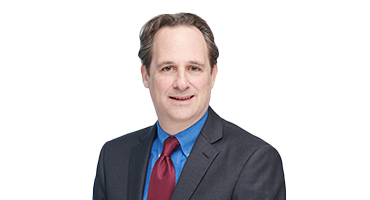The first few weeks of 2025 saw a number of courts, administrative authorities and legislatures provide guidance on several distinctive income tax issues, including the substance of 80/20 companies, the creation of a new research and development credit, the treatment of repatriated income, the constitutionality of retroactive tax regulations, and the apportionment of deferred compensation. Specifically, an Illinois circuit court held that a subsidiary did not qualify as an 80/20 company because a “shell” company was used to provide tax benefits. Michigan enacted a new research and development tax credit that is effective beginning with the 2025 tax year. The New Jersey Tax Court determined that repatriated income is not subject to the state’s gross income tax. A New York trial court upheld apportionment regulations that were retroactive to the 2015 tax year. The New York Tax Appeals Tribunal held that deferred compensation should be allocated based on when the income was generated rather than when the income is distributed. Finally, a New York administrative law judge upheld the use of the convenience of the employer test for remote workers. The State and Local Thinking newsletter for February discusses all these developments.
Illinois court holds subsidiary did not qualify as 80/20 company
On Jan. 9, 2025, in PepsiCo, Inc. v. Illinois Department of Revenue, the circuit court in Sangamon County, Ill., entered judgment in favor of the Illinois Department of Revenue and held that the taxpayer’s subsidiary was not an 80/20 company and could not be excluded from the taxpayer’s combined Illinois tax returns. The trial court determined that the purported 80/20 company owned a “shell” company that was created for tax benefits and should not be considered in the 80/20 analysis. This decision, which concerned the 2016 and 2017 tax years, is consistent with a prior decision of the Illinois Tax Tribunal in 2021 involving the same taxpayer for the 2011-2013 tax years.
The taxpayer, PepsiCo, manufactures, markets, and sells a variety snacks, beverages, and foods in approximately 200 countries around the world. PepsiCo offered global job postings through its Expatriate Program. Under this program, employees took assignments throughout the world with PepsiCo’s related foreign business entities. Frito-Lay was a wholly owned subsidiary that manufactured snack foods that are sold primarily in the U.S. In 2010, PepsiCo formed PepsiCo Global Mobility LLC (PGM) as a single-member limited liability company (SMLLC) owned by Frito-Lay. PepsiCo elected to treat this new entity as disregarded for federal and state income tax purposes. All expatriates were listed as employees of PGM. The Department disallowed PepsiCo’s treatment of Frito-Lay as an excluded 80/20 company.
In general, Illinois follows the rule that all unitary members of the business group must be included in the unitary group. However, Illinois allows an exemption for water’s edge filers that can demonstrate that more than 80% of their business activities fall outside the U.S. (commonly known as the 80/20 rule). To qualify, the member must calculate a ratio of its domestic to worldwide property and payroll factors. If these calculations reflect that less than 20% of the member’s business activity is conducted within the U.S., the exemption is available for that member, and that member’s income and apportionment factors are excluded from the overall income of the unitary business group for Illinois income tax purposes.
The court found that the payroll of certain expatriate personnel charged to PGM should be incorporated in the payroll calculations of Frito-Lay for purposes of determining whether Frito-Lay was an 80/20 company. According to the court, PGM was created to operate as a “shell” company for purposes of providing tax benefits to Frito-Lay. The court agreed with the Department that the expatriates were not PGM’s common law employees and their payroll could not be included in the calculation to determine Frito-Lay's 80/20 status. In addition, the court found that PepsiCo failed to meet its burden of proving that Frito-Lay conducted 80% or more of its business outside the U.S. The expatriate compensation charged to PGM did not represent substantive foreign business activities conducted by Frito-Lay through PGM. The court determined that Frito-Lay derived the majority of its profits from the purchase and resale of products in the U.S. PepsiCo did not meet its burden of proving that Frito-Lay was an 80/20 company. Furthermore, the court found that no reasonable cause existed to abate the late payment penalty.
The PepsiCo litigation concerning the rejection of 80/20 company status has garnered considerable attention, and could lead to other states that offer preferential 80/20 status to foreign-based companies to subject these companies to further scrutiny at audit. In the longer term, it is possible that states will consider limiting or abandoning the 80/20 company concept, perhaps through adoption of worldwide combined reporting regimes.
Michigan enacts R&D credit for expenses incurred in state
On Jan. 13, 2025, Michigan enacted legislation, H.B. 5100, allowing authorized businesses to claim a research and development (R&D) credit against corporate income tax for tax years beginning on or after Jan. 1, 2025. On the same day, Michigan enacted legislation, H.B. 5101, which provides a similar R&D credit against withholding taxes for certain pass-through entities.
The amount of the credit is dependent upon the size of the company, the amount of the qualifying R&D expenses incurred as compared to a historical base amount of qualifying R&D expenses the company has incurred, and whether the company is incurring these expenses in collaboration with a Michigan research university. Further, the credit is subject to a taxpayer-specific and overall cap.
For an authorized business with at least 250 employees, the credit is the sum of 3% of the qualifying R&D expenses incurred during the calendar year ending with or within the tax year up to the base amount and 10% of the qualifying R&D expenses incurred during the calendar year ending with or within the tax year over the base amount. This credit may not exceed $2 million per tax year per taxpayer. For an authorized business with less than 250 employees, the credit is the sum of 3% of the qualifying R&D expenses incurred during the calendar year ending with or within the tax year up to the base amount and 15% of the qualifying R&D expenses incurred during the calendar year ending with or within the tax year over the base amount. This credit may not exceed $250,000 per tax year per taxpayer.
A taxpayer that is an authorized business may claim an additional credit equal to 5% of the qualifying R&D expenses that were incurred in collaboration with a research university in Michigan under a written agreement between the taxpayer and the research university. The additional credit under this provision is limited to $200,000 per tax year per taxpayer.
To be eligible for a credit, a taxpayer must submit with the Michigan Department of Treasury by April 1, 2026, tentative claims for qualifying R&D credits incurred during the 2025 calendar year. For future tax years, the tentative claims must be submitted by March 15 after the calendar year ending with or within the tax year for which the taxpayer intends to submit a claim for the credit. The aggregate amount of all R&D credits approved may not exceed $100 million in a single calendar year. If the tentative claims exceed this amount, the Department is directed to prorate the amount of the credits. It should be noted that the credit cannot be transferred or assigned to another taxpayer.
The legislation includes definitions of “authorized business,” “base amount,” and “qualifying R&D expenses.” “Authorized business” means a taxpayer that has incurred qualifying R&D expenses over the base amount during the calendar year ending with or within the tax year for which a credit is being claimed. “Base amount” means the average annual amount of qualifying R&D expenses incurred during the three calendar years immediately preceding the calendar year ending with or within the tax year for which a credit is being claimed. Qualifying R&D expenses are qualified research expenses as defined in Internal Revenue Code (IRC) Sec. 41(b) for research conducted in Michigan. However, qualifying R&D expenses do not include qualified research expenses for research conducted outside Michigan. Taxpayers expecting to incur significant R&D expenses in comparison to prior years in Michigan should consider the use of this credit.
New Jersey court holds repatriated income not subject to GIT
In Amin v. Director, Division of Taxation, the New Jersey Tax Court held on Dec. 31, 2024, that New Jersey gross income tax (GIT) does not apply to the undistributed earnings of certain controlled foreign corporations (CFCs) as deemed repatriated earnings that were subject to federal income tax under Internal Revenue Code (IRC) Sec. 965 in 2017. The undistributed income that the taxpayers had to federally report under IRC Sec. 965 was not includible as dividends for GIT purposes.
The taxpayers were New Jersey residents that were direct and indirect shareholders in six CFCs. For the 2017 tax year, the taxpayers jointly filed a federal income tax return and a New Jersey resident GIT return. On their federal return, they reported their share of the post-1986 income earned by the CFCs in a total amount over $16 million. The taxpayers did not actually receive any portion of this amount as a distribution and reported the entire amount as subpart F income under IRC Sec. 965. On their New Jersey return, the taxpayers did not report any portion of the IRC Sec. 965 undistributed income.
The New Jersey Division of Taxation audited the taxpayers and included the IRC Sec. 965 income as dividends, “an enumerated category of income,” under the GIT Act. According to the Division, the amount was a “deemed repatriated dividend” that should be reported as income “in the same tax year and in the same amount as reported for federal purposes.” The Department issued a notice of deficiency assessing GIT against the taxpayers with penalties and interest for over $2 million. The taxpayers appealed the deficiency notice directly to the New Jersey Tax Court.
The federal Tax Cuts and Jobs Act (TCJA), which was enacted in 2017, included an overhaul of the federal taxation of U.S. taxpayers that earn international income. IRC Sec. 965 created a one-time tax for the 2017 tax year in which taxpayers’ subpart F income from CFCs was effectively increased by the accumulated post-1986 deferred foreign income of the CFCs. This one-time repatriation tax was imposed by deeming the deferred foreign earnings as being repatriated and included in the U.S. taxpayer’s income for the 2017 tax year.
In 2018, the Division issued a notice explaining that deemed repatriation dividends were excluded from entire net income for purposes of the New Jersey corporation business tax (CBT). However, New Jersey subsequently enacted legislation reducing the exclusion amount from 100% to 95%. The Division released a notice and other guidance advising that dividends are an enumerated category of income for GIT purposes. As such, deemed repatriated dividends reported under IRC Sec. 965 must be included in the same tax year and in the same amount as reported for federal purposes.
In granting summary judgment for the taxpayers, the Tax Court determined that IRC Sec. 965 income was not taxable as deemed dividends under the GIT. The court explained that dividends are a specified category of income under the GIT, but the plain statutory language requires that there be a “distribution” in cash or kind, and the source of the distribution must be from current or accumulated corporate earnings or profits. In the instant case, it was undisputed that the taxpayers did not receive, whether in cash or kind, any amount from the CFCs. The court held that under the plain statutory language, the Division’s attempt to include the taxpayers’ pro rata share of the CFCs undistributed earnings as dividends failed. The court declined to expand the statutory definition of “dividends” to include an IRC Sec. 965 “deemed repatriated dividend.” The decision highlights the issue of how states are still grappling with how TCJA provisions enacted more than seven years ago interact and conflict with more historic aspects of state income tax regimes which may not have explicitly considered how to treat a deemed repatriation regime enacted for federal income tax purposes.
New York court rejects challenge of retroactive tax regulations
In Paychex, Inc. v. Department of Taxation and Finance, a trial court in Albany County, New York, rejected a challenge on Dec. 18, 2024, of certain retroactive income tax apportionment regulations concerning the exclusion of reimbursements received for professional employer organization (PEO) services. Although the regulations generally are being applied retroactively since New York’s 2015 adoption of corporate tax reform, the court determined that the retroactivity policy did not violate the PEO’s due process rights.
Paychex provides PEO services to its clients to manage their own employee benefits, human resources, payroll, and compliance. Under New York law, Paychex is required to enter into co-employment relationships with its clients providing that the employees are co-employees of Paychex and known as “worksite employees.” Paychex is deemed an employer for purposes of sponsoring employee welfare benefit plans and uses its operating funds to pay worksite employees’ wages and other expenses. The clients subsequently reimburse Paychex for these costs. This case concerns the apportionment treatment of these reimbursements.
In 2007, New York State began the process of substantially reforming its tax laws, eventually enacting new laws in 2014 that were effective beginning with the 2015 tax year. The apportionment statute generally provides that business receipts from a customer within the state are included in the numerator. Business receipts from customers everywhere are included in the denominator. The New York Department of Taxation and Finance repealed the existing corporate tax regulations and began a nine-year process of reforming them in 2015. During this period, the Department publicly posted over 40 drafts of the proposed regulations and requested public comment. The proposed regulations excluded reimbursements from the numerator of the apportionment factor. In March 2017, Paychex’s attorneys met with the Department and submitted written comments opposing the exclusion of reimbursements. The Department subsequently posted the proposed regulations on its website on several occasions and Paychex again addressed its concerns by letter. The Department adopted the regulations on Dec. 27, 2023. Because the regulations interpret the tax reform statutory amendments applicable to tax years beginning on or after Jan. 1, 2015, the Department generally applies the regulations to the same periods, with limited exceptions.
Paychex filed litigation arguing that certain provisions of the apportionment regulation, N.Y. Comp. Codes R. & Regs. tit. 20, Secs. 4-1.2(b)(6) and (c), are inconsistent with the New York State apportionment statute because the amount a PEO receives for worksite employees, and other expenses, are within the common meaning of “receipt.” The regulations, according to Paychex, exclude reimbursements and include a new definition of “receipts” that is unsupported by the tax law. Paychex sought a declaratory judgment and challenged the regulations as: (i) against public policy; (ii) irrational, unreasonable, arbitrary and capricious, and in excess of the Department’s jurisdiction; (iii) a violation of its rights under the Equal Protection Clauses of the New York State and U.S. Constitutions; and (iv) a violation of its due process rights because of the retroactivity of the regulation. The Department filed a motion for summary judgment to dismiss the action, and Paychex moved for summary judgment seeking an order granting its petition.
The trial court found in favor of the Department and denied the relief sought by Paychex. However, the court first rejected the Department’s motion to dismiss the case based on an argument that Paychex lacked standing because it had not suffered any injury. Also, the court granted the Department’s motion to dismiss Paychex’s request for declaratory relief. In denying Paychex’s request, the court noted that the pleadings did not allege that Paychex has been injured, but that it will be injured in future tax years. Paychex had not demonstrated an injury and had not exhausted its administrative remedies.
Finally, the trial court rejected Paychex’s constitutional arguments. The court considered Paychex’s constitutional challenge that the nine-year retroactive period of the regulation violated due process. In rejecting this argument, the court noted that Paychex was forewarned of the change as early as 2017. The Department had issued multiple proposed drafts of the regulations and Paychex had submitted written comments concerning the draft regulations. Also, Paychex and the Department negotiated a settlement for the tax periods of June 1, 2014, through May 31, 2019. Thus, the closing agreement encompassed a large portion of the retroactive period. Considering all factors, the court did not find that the retroactive period violated Paychex’s due process. The court explained that “[a]lthough nine years appears to be a significant period, under these circumstances, it is possible that it is a reasonable period of time.” The Department was required to extensively revise the regulations based on significant changes in the tax law and publicly posted over 40 revisions and requested public comment each time it issued revisions.
The court also disagreed with Paychex’s equal protection argument. Paychex did not show that it was being treated differently than any other taxpayer. Based on the fact that the regulations generally are being applied retroactively for nine years, and the regulations are vast in scope providing for novel interpretations and clarifications of statutory language, it is likely that courts will continue to address the procedural and substantive aspects of the regulations.
New York considers apportionment of deferred compensation
On Dec. 12, 2024, the New York Tax Appeals Tribunal held in Matter of Techar that nonqualified deferred compensation should be sourced to the location for the years in which the amounts were derived, rather than the year in which they were distributed. Deferred compensation that was distributed in 2017 was allocated based on the 1998-2003 tax years during which the services generating the income were performed.
In 2017, the taxpayers were nonresident partners of Aristeia Holdings, LP (Aristeia), which was formed as a limited partnership in Delaware in 2008. Aristeia owned 100% of Aristeia Capital LLC (Aristeia Capital), a disregarded limited liability company (LLC) that was formed in Delaware in 1997. The taxpayers were not employees of either entity. Aristeia Capital operated as a registered investment advisor, providing investment management services to private investment funds. From 1998 through 2003, Aristeia Capital maintained its only office location within New York State. In 2009, Aristeia Capital became wholly owned by Aristeia and opened an office in Connecticut. Aristeia Capital moved its principal office from New York to Connecticut in 2015. For the 1998-2003 tax years, Aristeia made an irrevocable election to defer certain percentages of management and performance fees of approximately $29 million. In 2017, when Aristeia recognized the deferred fees, the appreciation on the deferred fees totaled over $97 million. During the 1998 through 2017 deferral periods, Aristeia Capital continued to perform ongoing investment services from office locations both within and outside New York State.
In 2010, the New York Division of Taxation published guidance, TSB-M-10(9)I, providing that an individual who receives income related to a business that was previously carried on in New York and other states must determine the New York business allocation percentage (BAP) for the year the contract that was entered into resulted in federal taxable income. In 2018, the Division issued guidance, TSB-M-18(2)C, 3(I) stating that for services performed before 2009, where the business, trade, profession, or occupation was carried on only in New York in the year the services were performed, the entire amount of nonqualified deferred compensation must be included in New York source income. If the business was carried on in New York and other states, the amount of nonqualified deferred compensation included in New York source income is determined using either the partnership’s books and records or the partnership’s three-factor formula comprised of ratios of in-state to everywhere property, payroll and sales.
In 2017, Aristeia included the full value of the deferred fees and appreciation in the numerator and denominator of its gross income percentage. Aristeia allocated the income to New York using the property and payroll factors for 2017. Because business was performed both within and outside New York during 2017, only a portion of the income was apportioned to New York. On audit, the Division removed the deferred fees and appreciation from the numerator and denominator of the gross income factor of Aristeia’s 2017 New York State BAP. The Division then separately allocated the income from the deferred fees and appreciation entirely to New York State because Aristeia had a 100% New York BAP throughout the 1998 through 2003 tax years. The taxpayers appealed to an administrative law judge (ALJ) at the New York Tax Division of Tax Appeals.
The ALJ agreed with the Division’s separate allocation of the deferred fees and appreciation using the BAP from the year the services generating the income were performed. The deferred fees were taxable at the time they were received but for the taxpayers’ election to defer. The taxpayers appealed to the New York Tax Appeals Tribunal.
The Tax Appeals Tribunal explained that the first question presented was whether the deferred fees and appreciation should be allocated as New York source income in the gross income percentage and ultimately be reflected in the BAP for 2017, or whether such income should be allocated to New York entirely using the BAP for 1998 through 2003, the years the services were performed. After considering the relevant laws and regulations, the Tribunal agreed with the ALJ that the Division’s separate allocation of the deferred fees and appreciation using the BAP from the time the services were performed was correct.
In affirming the ALJ, the Tribunal also rejected the taxpayers’ argument that the 2018 TSB-M issued by the Division violates the New York Constitution and State Administrative Procedures Act (SAPA). The Tribunal explained that the 2018 TSB-M did not create any new rules but was merely explanatory in nature. Technical memoranda are primarily designed to keep taxpayers and other interested persons informed and to ensure consistent understandings throughout the Division. Accordingly, the directions contained in the 2018 TSB-M did not violate the New York State Constitution or SAPA. The Tribunal also concluded that the ALJ correctly determined the taxpayers’ disregard of the applicable law and guidance constituted negligence, and that imposition of the penalties was proper.
The Tribunal’s decision is timely, in that the issue of how deferred income arrangements are ultimately sourced for state income tax purposes when such income is received by individuals has become more prominent in recent years. As the use of these arrangements has grown, individuals have become more cognizant about where they and their underlying businesses are located. As such, it is expected that more courts and administrative tribunals will need to weigh in on how to source income that is recognized many years after an initial agreement is executed, where the location of the individuals and businesses may have drastically changed over time.
New York ALJ applies ‘convenience of the employer’ rule
On Jan. 8, 2025, a New York ALJ applied the state’s “convenience of the employer” rule in Matter of Myers and held that an employee who usually worked from his employer’s office in New York City was subject to the state’s individual income tax for the period that he worked from his Pennsylvania residence due to the COVID-19 pandemic. The taxpayer’s employer was a bank providing an essential service that was not required by New York City to close during the pandemic, but the taxpayer was unable to work from the New York City office because such office in fact was temporarily closed.
The taxpayer was a longtime Pennsylvania resident who was employed by Bank of Montreal (BMO). From Jan. 1 through March 13, 2020, the taxpayer worked at BMO’s office in New York City. Beginning March 20, 2020, New York required employees to work from home unless they were employed by an entity providing essential services such as banks or financial institutions. As a result, BMO was not required to close its New York City office. Beginning March 16, 2020, however, BMO closed its New York City site and required the taxpayer to find alternative working arrangements. The taxpayer worked at BMO’s disaster recovery site in New Jersey on March 16 and 17, 2020, and worked exclusively from his home in Pennsylvania from March 18 through Dec. 31, 2020. As a result, during 2020, nearly 80% of the taxpayer’s workdays occurred outside New York.
For the 2020 tax year, the taxpayer timely filed a New York State resident and part-year resident income tax return. The taxpayer’s return claimed a refund, but the New York State Department of Taxation and Finance only granted part of the refund. The Department issued a notice of disallowance for the remainder of the refund based on application of the “convenience of the employer” rule that allocated all the taxpayer’s 2020 workdays to New York. The taxpayer appealed to the New York Division of Tax Appeals’ ALJ unit.
Under N.Y. Tax Law Sec. 631(c), the state may tax a nonresident only on income that is “derived from or connected with New York sources.” A regulation, N.Y. Comp. Codes R. & Regs. tit. 20, Sec. 132.18(a), provides if a nonresident employee performs services both within and outside New York, the portion of the employee’s income derived from New York sources is the ratio of total days worked in New York to total days worked both within and outside the state. This regulation limits the allocation of days outside the state with the “convenience of the employer” test, which provides that “any allowance claimed for days worked outside New York State must be based upon the performance of services which of necessity, as distinguished from convenience, obligate the employee to out-of-state duties in the service of his employer.”
The Department successfully argued that because BMO was exempt from the office closure requirement, the convenience of the employer test applied to the taxpayer because he could have performed his job at the employer’s New York City office if the accommodations had been made available. Specifically, the Department asserted that although BMO decided to temporarily close its office and did not provide accommodation for the taxpayer, this did not constitute a necessity for BMO because it was exempt from the office closure mandate. The taxpayer unsuccessfully argued that he was required to work from his Pennsylvania home absent any other suitable location because working from BMO’s New York City office was impossible. The ALJ noted that although it may have been necessary for the taxpayer to find alternative working arrangements, there was no evidence supporting why it was necessary for BMO to close its office. The taxpayer failed to show that his work could not be performed from BMO’s New York City office due to specialized equipment needs or the nature of the work itself.
This decision is consistent with a New York ALJ’s prior decisions in Matter of Struckle in August 2024 and Matter of Zelinsky in November 2023. However, the fact pattern in this case differs because the employer was providing an essential service and was not required to close during the pandemic. As pandemic-era fact patterns continue to be audited by the Department, New York’s administrative and judicial forums are likely to remain busy in considering and interpreting the reach of the Department’s longstanding convenience of the employer rule.
Contacts:
Content disclaimer
This Grant Thornton Advisors LLC content provides information and comments on current issues and developments. It is not a comprehensive analysis of the subject matter covered. It is not, and should not be construed as, accounting, legal, tax, or professional advice provided by Grant Thornton Advisors LLC. All relevant facts and circumstances, including the pertinent authoritative literature, need to be considered to arrive at conclusions that comply with matters addressed in this content.
Grant Thornton Advisors LLC and its subsidiary entities are not licensed CPA firms.
For additional information on topics covered in this content, contact a Grant Thornton Advisors LLC professional.
Tax professional standards statement
This content supports Grant Thornton Advisors LLC’s marketing of professional services and is not written tax advice directed at the particular facts and circumstances of any person. It is not, and should not be construed as, accounting, legal, tax, or professional advice provided by Grant Thornton Advisors LLC. If you are interested in the topics presented herein, we encourage you to contact a Grant Thornton Advisors LLC tax professional. Nothing herein shall be construed as imposing a limitation on any person from disclosing the tax treatment or tax structure of any matter addressed herein.
The information contained herein is general in nature and is based on authorities that are subject to change. It is not, and should not be construed as, accounting, legal, tax, or professional advice provided by Grant Thornton Advisors LLC. This material may not be applicable to, or suitable for, the reader’s specific circumstances or needs and may require consideration of tax and nontax factors not described herein. Contact a Grant Thornton Advisors LLC tax professional prior to taking any action based upon this information.
Changes in tax laws or other factors could affect, on a prospective or retroactive basis, the information contained herein; Grant Thornton Advisors LLC assumes no obligation to inform the reader of any such changes. All references to “Section,” “Sec.,” or “§” refer to the Internal Revenue Code of 1986, as amended.
Grant Thornton Advisors LLC and its subsidiary entities are not licensed CPA firms.
Trending topics













Share with your network
Share